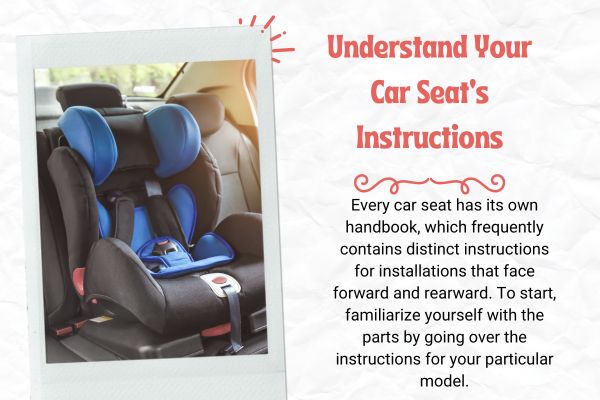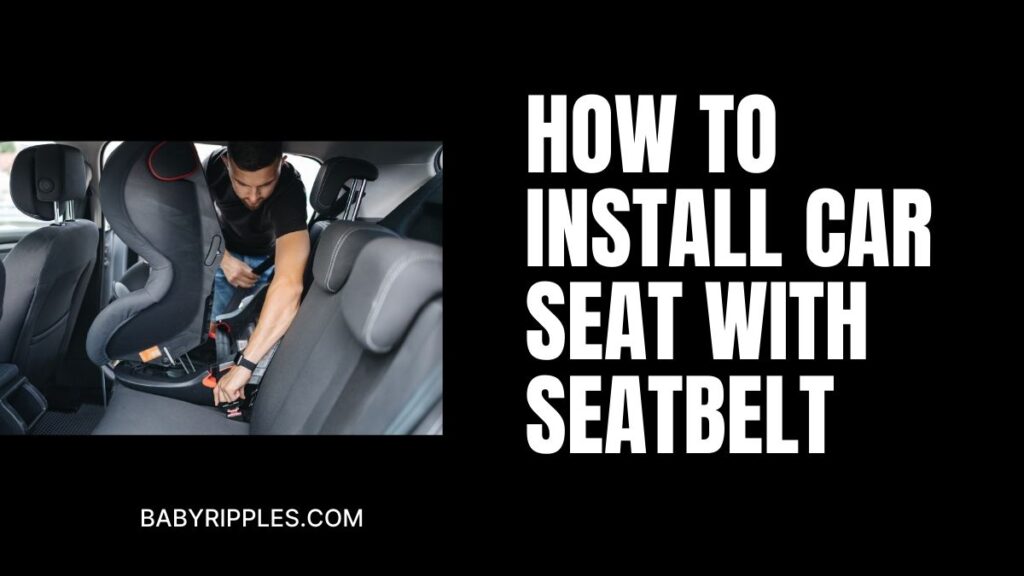It could be difficult to figure out how to install a car seat with a seatbelt when it comes to locking your youngster in the vehicle. If your vehicle lacks a LATCH (Lower Anchors and Tethers for Children) or you are using a car seat without a base, you will need to know how to install a car seat. Regardless of whether you’re looking for a booster, convertible, or infant seat, this guide will help you find the perfect fit. Additionally, it’s essential to be aware of Car Seat Laws by State to ensure that you comply with local regulations regarding car seat usage and installation.
Why Proper Installation is Important
Your child may only be protected by the greatest car seat if it is placed properly. The seat’s security may be compromised by improper installation, raising the possibility of movement during abrupt stops or crashes. Even though it would seem like any seatbelt would work, there are certain rules that must be followed to make sure car seats are securely fastened.
Step-by-Step Guide on How to Install a Car Seat with a Seatbelt
1. Understand Your Car Seat’s Instructions

Every car seat has its own handbook, which frequently contains distinct instructions for installations that face forward and rearward. To start, familiarize yourself with the parts by going over the instructions for your particular model. The seatbelt path’s guides are usually red for forward-facing seats and blue for rear-facing seats.
Tip: For model-specific guidance, see the owner’s manual for your car as well as the car seat. The ideal location for the car seat inside your automobile is frequently suggested by the owner’s manual.
2. Choose the Right Spot in Your Car

The rear center seat is usually the optimum location for the car seat in most cars. Since this location is farthest away from the doors, side collisions are less likely to cause an impact. But not every vehicle can accommodate a central placement. The rear passenger side is frequently advised for convenient access if this is the case.
3. Place the Car Seat Correctly

When positioning the car seat:
• Verify that the base or shell of the seat rests flat against the seat of the car.
• Verify that there are no tilts or gaps.
• The effectiveness of the automobile seat may be harmed if you lean or tilt it back to obtain more recline.
4. Thread the Seatbelt Through the Correct Guides

Use the blue guides that are supplied for seats that face backward. Refer to the red guidelines for seats facing forward. To make the process easier to understand, these guides are color-coded:
After guiding the lap belt through the lower belt courses and pulling the seatbelt out, click the belt into the seatbelt buckle.
Important: The shoulder belt and lap belt should be securely fastened without slack or twists for a snug fit.
5. Tighten the Seatbelt and Remove Slack

Now that the belt is fastened, let’s check that it fits snugly. Here’s how to accomplish it:
Use your knee to firmly press the car seat into place. Pull on the shoulder belt to eliminate any slack. Some seats have built-in tension mechanisms or lock-off clips; make use of these features to keep the seatbelt tight and secure.
Advice: When gently tugged at the base after tightening, the car seat should move no more than 1 inch in any direction.
6. Check for Buckle Crunch

Buckle crunch happens when the buckle bends at an angle because it is too close to the child’s car seat frame. This may cause a buckle to fail dangerously in a collision. To stay clear of this:
Rethread the belt or see if the car seat can be adjusted to a better angle if you observe any tilting or bunching around the buckle. • Verify that the seatbelt buckle stays flat and free of any sharp edges.
7. Adjust the Recline for Rear-Facing Seats

Achieving the proper recline is crucial for infant car seats without bases since an excessively upright position could cause the baby’s head to slip forward. When the angle is right, many rear-facing chairs contain an indicator or a built-in recline adjuster.
Note: To get the right angle if the seat doesn’t have a reclining feature, use a rolled towel or pool noodle underneath the front. Just make sure that this modification complies with the instructions provided by the car seat manufacturer.
8. Double-Check the Seatbelt

Go over the entire seatbelt:
Verify that there are no folds or twists.
Verify that every component rests flat against the automobile seat.
Verify that the belt adheres to all guidelines in accordance with the directions in the manual.
9. Turn on tensioning systems or lock-off clips.

A lot of car seats have tensioners or lock-off clamps to keep the seatbelt in place. Over time, the belt won’t loosen thanks to these clips. Refer to your car seat’s handbook for information on how to engage them.
10. Test for Stability

Lastly, shake the car seat firmly. It should not move in any direction more than 1 inch. It could need to be tightened or reinstalled if there is excessive movement.
Essential Safety Tips for Installing Your Car Seat with Confidence
• Watch a Video: The majority of manufacturers provide step-by-step video instructions. It can be beneficial to see a video presentation, particularly if you learn best visually.
•Obtain a Second Opinion: Free car seat examinations are provided by the local police and fire departments as well as by certain auto dealerships. You may feel more at ease if you have an expert review your work.
• Steer Clear of Common Pitfalls: Some of the most common problems are wrong angle, excessive slack, and buckle crunch. Verify every component one more time, particularly after repositioning or modifying the car seat.
Your child’s safety depends on the car seat being installed correctly. After following these instructions, you ought to feel safe enough to fasten the seat firmly and make sure it stays sturdy in any vehicle. Never forget that it’s worthwhile to get a professional fitting or inspection if you have any questions. Safety is the top priority, and by using this instruction, you’ll quickly learn how to accurately and safely install a car seatbelt.
Frequently Asked Questions about how to install car seat with seatbelt
1. What if I Need to Install an Infant Car Seat Without a Base?
Understanding how to install a car seat without a base might be extremely helpful for parents who frequently swap cars or take cabs. The majority of baby car seats come with instructions on how to install them without a base simply fastening the seatbelt directly over the seat. Make sure the infant seat is reclined at a safe angle and follow the blue instructions on the seat for the best fit.
2. Where Should a Car Seat Be Installed?
If at all possible, position the car seat in the middle rear seat for optimal safety. The next safest option is the passenger side of the back seat if not.
3. Can I Use a Car Seat Without a Base?
Yes, many car seats without bases are safe when installed properly. Always double-check for tightness and use the correct belt guides.
4. How Do I Know if My Car Seat is Installed Correctly?
Check that the seat doesn’t move more than 1 inch side-to-side or front-to-back. Also, confirm that the seatbelt follows the correct path and that any lock-offs or tension systems are engaged.





